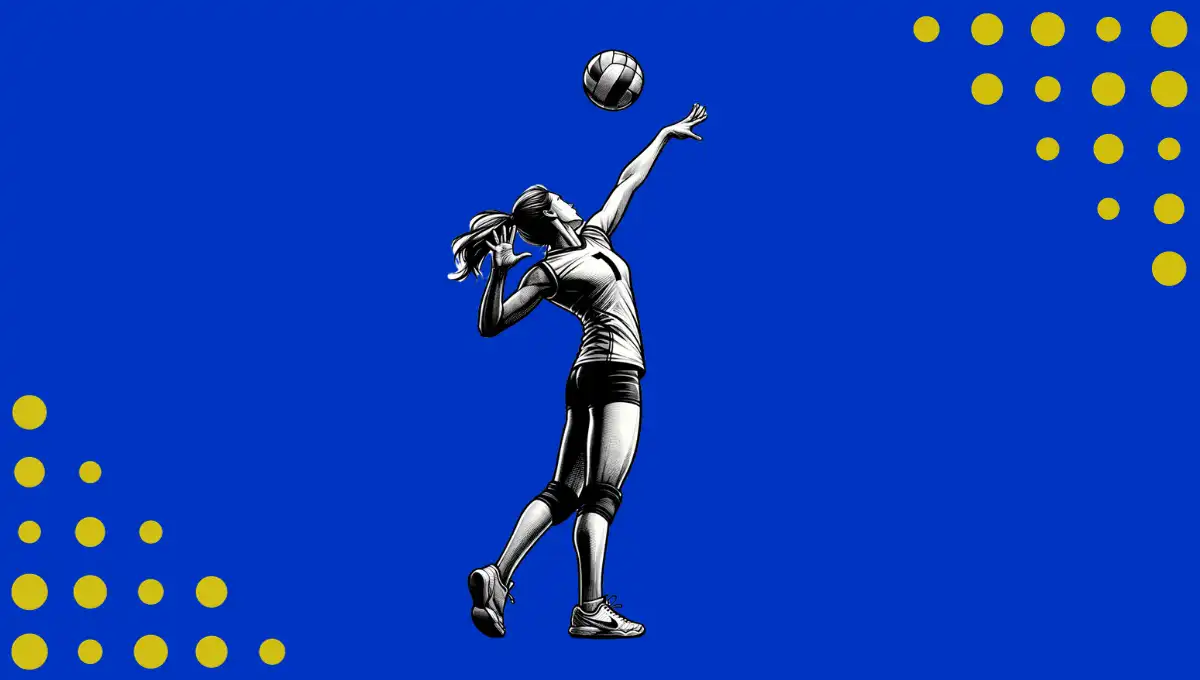Volleyball features a variety of attack techniques, such as the spike, tip, roll shot, and back-row attack. Each of these shots are used to score points, but none can be as powerful and intimidating as the kill. A kill is a spike shot that is hit so hard and fast that it’s almost impossible for the opposing team to return it.
Sometimes, new players become confuse because the “kill” term is commonly associated with aggression. In volleyball, it’s a technical term, used positively to describe a skillful offensive play. In this article, we will try to explain what a kill is, how to do it, and why it’s an important part of the game.
What a kill is in volleyball?
In volleyball, a “kill” refers to a successful attack that directly leads to a point or causes the opposing team to lose their serve (side-out). It usually happens when a player hits the ball over the net in a way that the opposing team cannot return it effectively. As a result, this leads to a point for the attacking team.
Kills are a crucial aspect of offensive play in volleybal. It is often achieved through powerful spikes, strategic placement, or exploiting the opponents' weaknesses in their defense.
How A Volleyball Kill Is Executed?
In volleyball, a kill is achieved through a combination of power, precision, and tactical play. It involves the attacker hitting the ball in such a way that the opponent cannot return it.
It requires skillful execution and strategic thinking, making it a crucial aspect of the game. This typically involves a well-timed jump and a forceful spike or block, aimed to exploit gaps in the opposing team’s defense.
Types of Volleyball kills
In volleyball, the term “kill” doesn’t have formal types. Instead, it refers to any successful offensive action that leads to a point. It can be achieved through various methods like powerful spikes, strategic tips, effective blocks, or strong overhead hits. Below are some famous types of kills that players use in volleyball:
- Hitting: A powerful, downward strike of the ball, typically from a height, aiming to land the ball in the opponent’s court with force.
- Tipping: A softer touch, using fingertips to gently redirect the ball over the net, targeting unguarded areas of the court.
- Blocking: Occurs at the net, where a player deflects the ball back into the opponent’s court during their attack, scoring directly.
- Overheading: Involves attacking the ball from above the height of the net, often with a forceful swing, to send the ball sharply downwards.
How to Track and Improve Volleyball Kills?
To track and improve volleyball kills, focus on technique, positioning, and game strategy. Regularly record and analyze game footage to identify areas for improvement.
Work on enhancing vertical jump and spike power through targeted training. Practice different types of kills (spikes, tips, blocks) and adjust tactics based on opponents' weaknesses. Consistent feedback from coaches and self-evaluation are key to developing a more effective and versatile attacking skill set.
How to Prevent Kills by the Opponent?
- To prevent opponent kills in volleyball, strong defense is key. Position yourself effectively on the court, predict where the ball might land. Enhance your team’s blocking skills to counter powerful spikes.
- Develop quick reflexes for effective digging, enabling you to retrieve hard-hit balls. Improving communication with teammates ensures coordinated defense, covering more court area.
- Regularly analyze opponents' strategies to predict their attack patterns. Focus on maintaining a high level of agility and stamina for sustained defensive performance throughout the game.
Final Thoughts
For players and fans, understanding and mastering the art of the kill is essential, as it significantly impacts a team’s offensive strength. On the defensive side, preventing opponent kills through effective positioning, communication, and reflexes is equally important. We hope our detailed overview of volleyball kills and defensive play has given you greater insight into the powerful spikes that can change the direction of a match.


